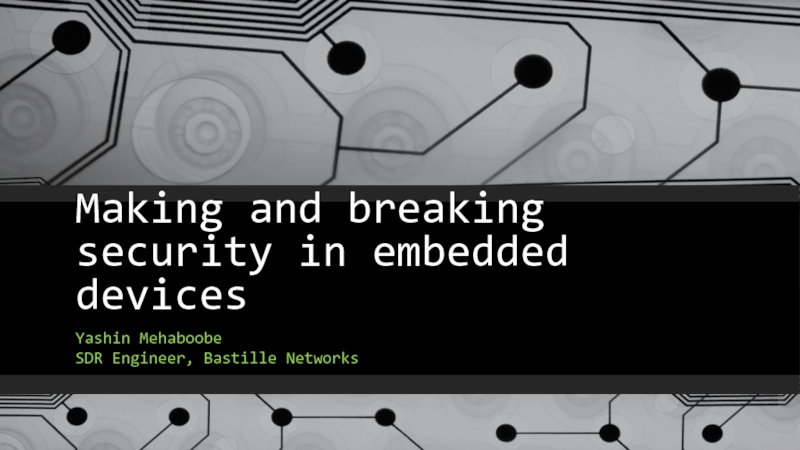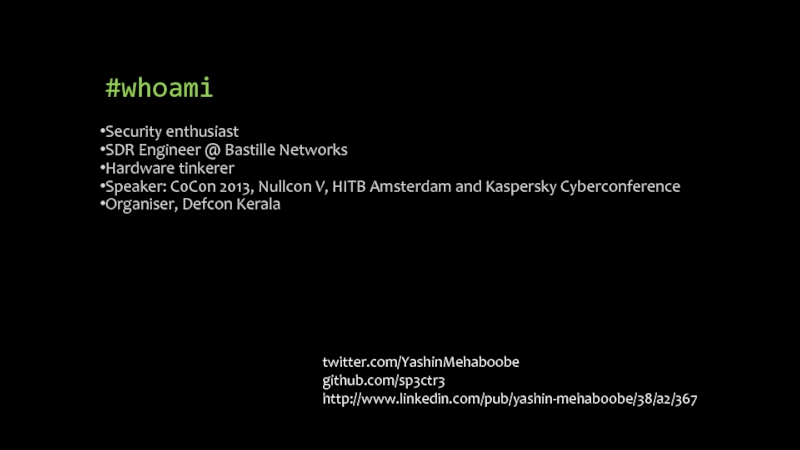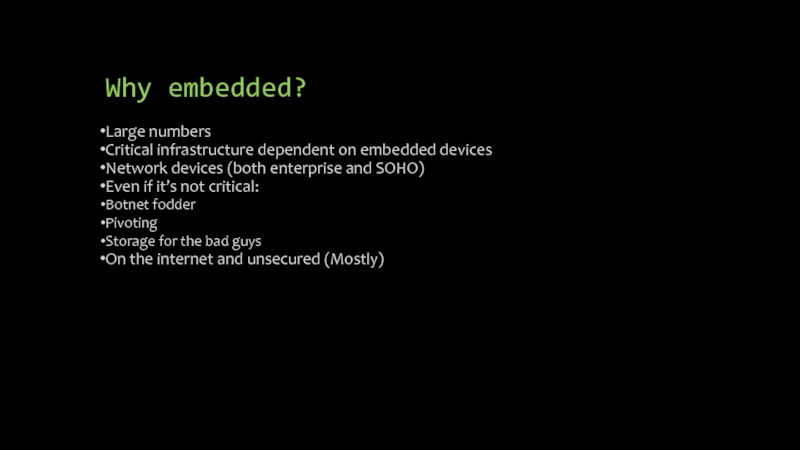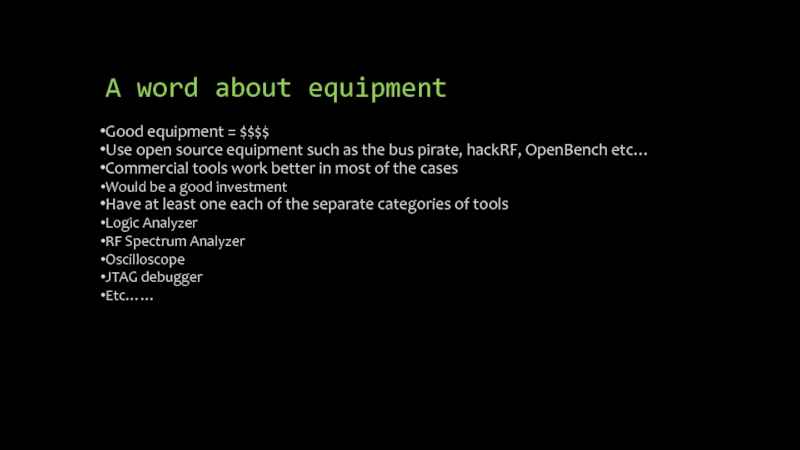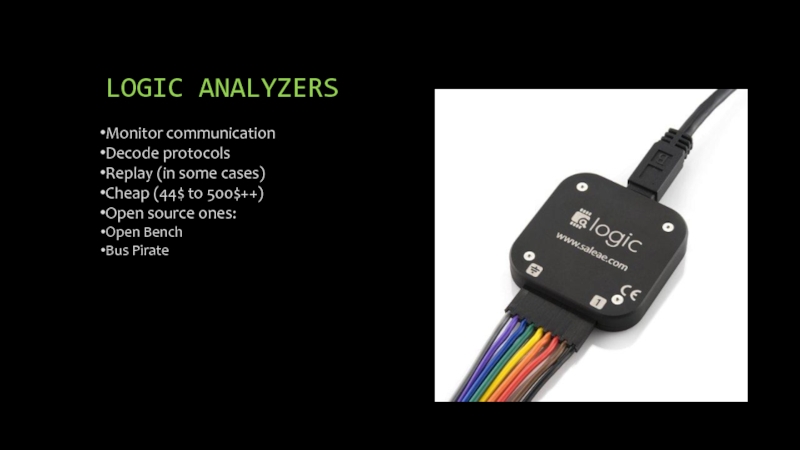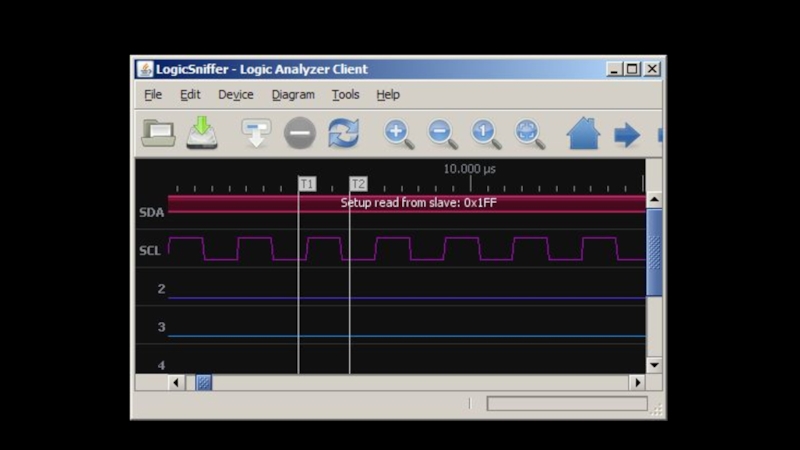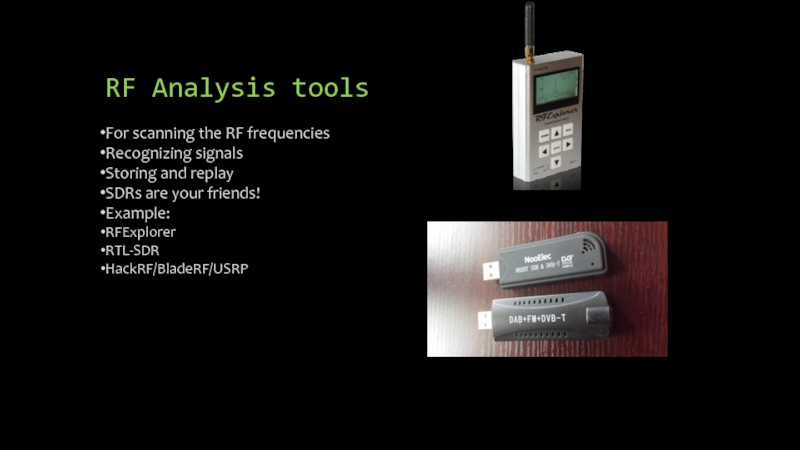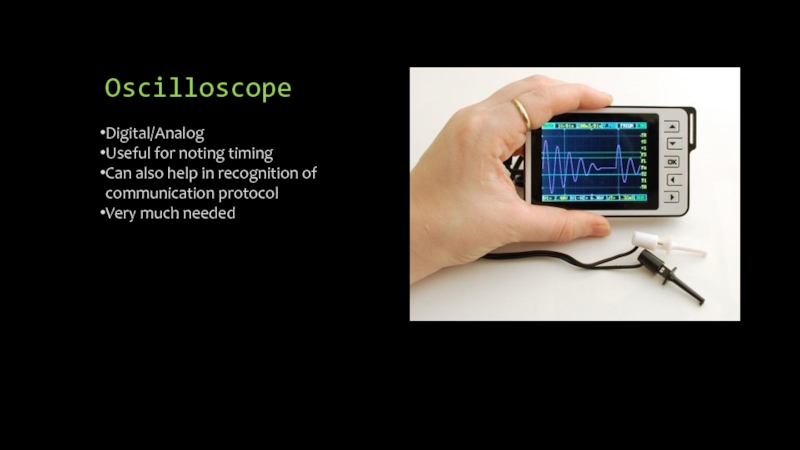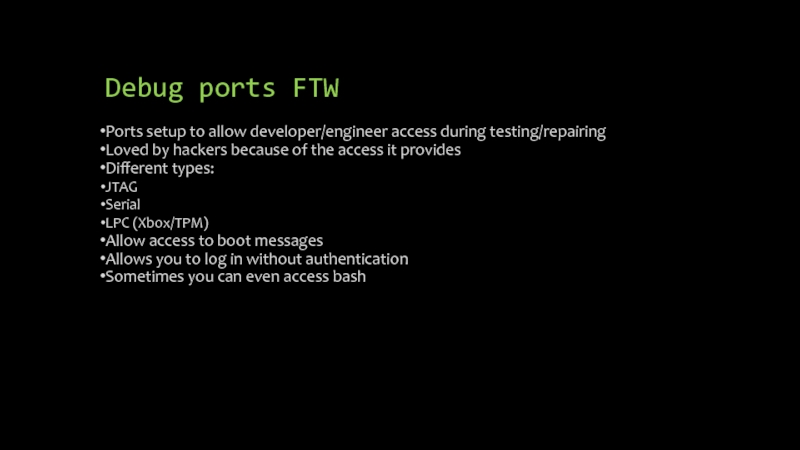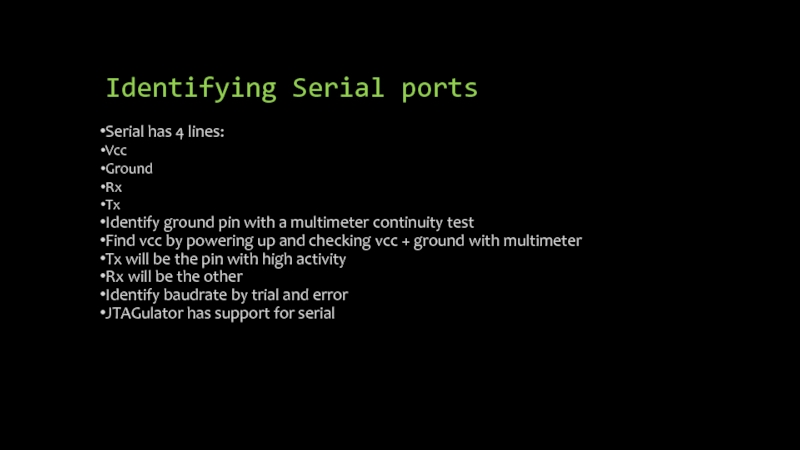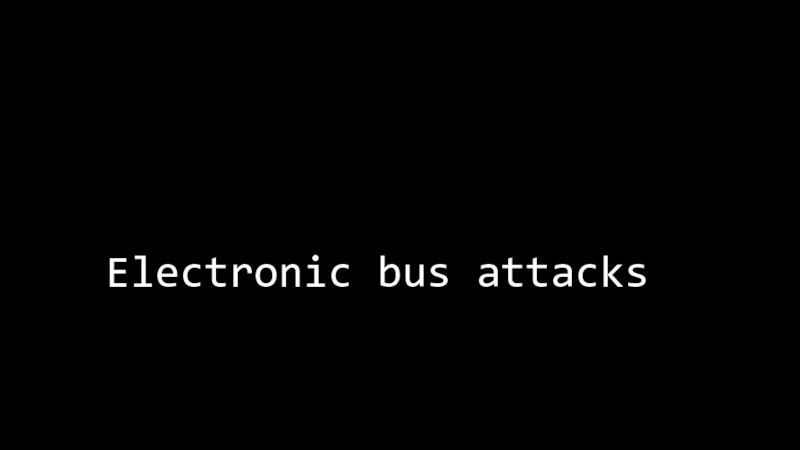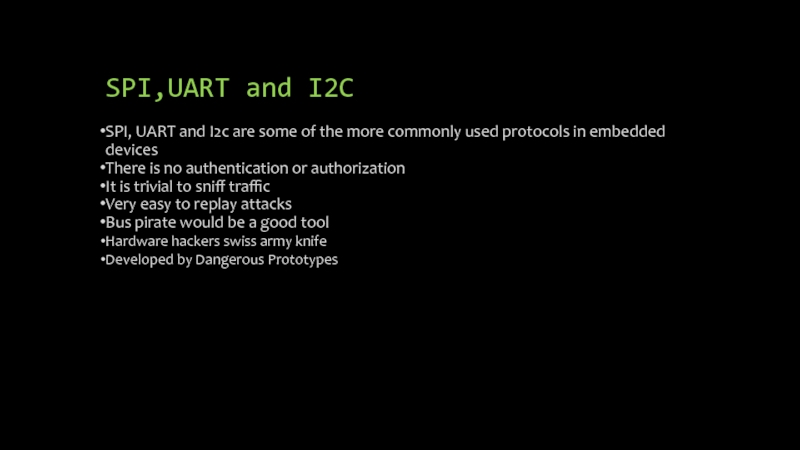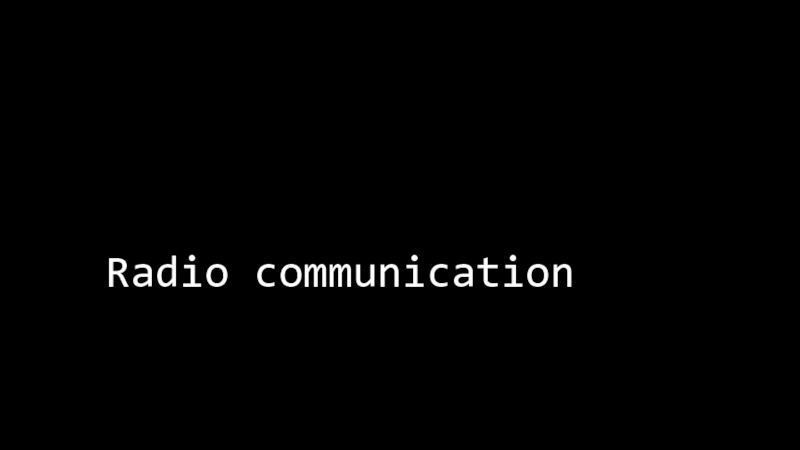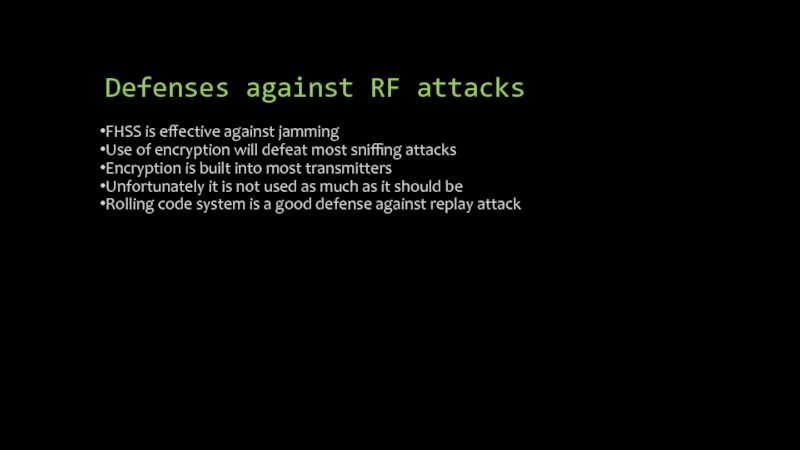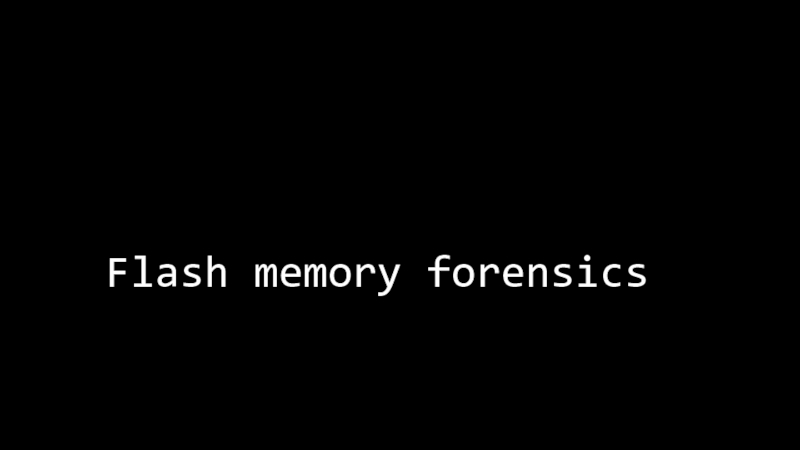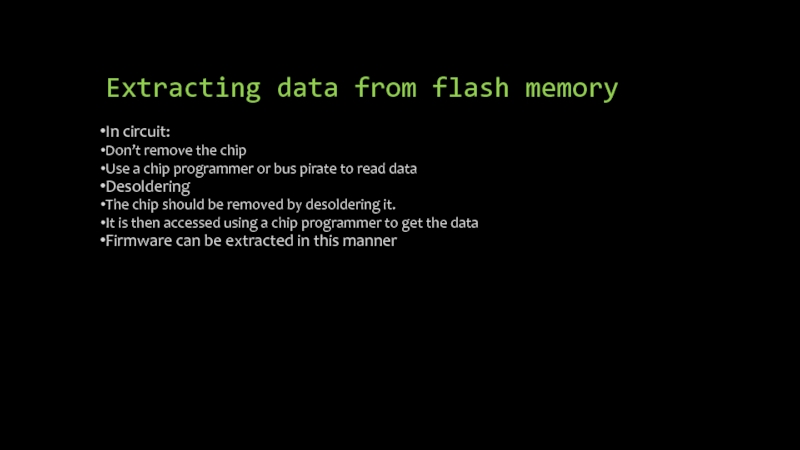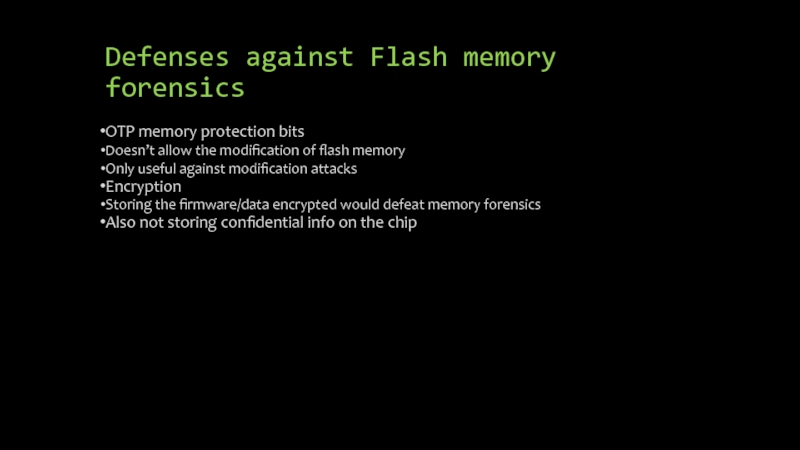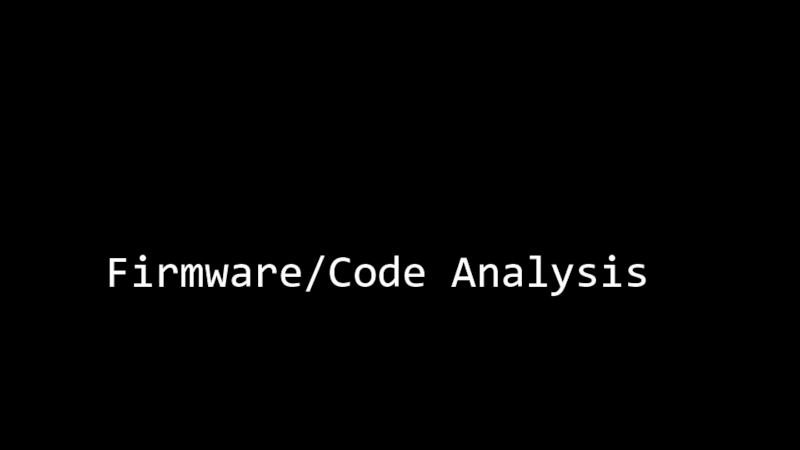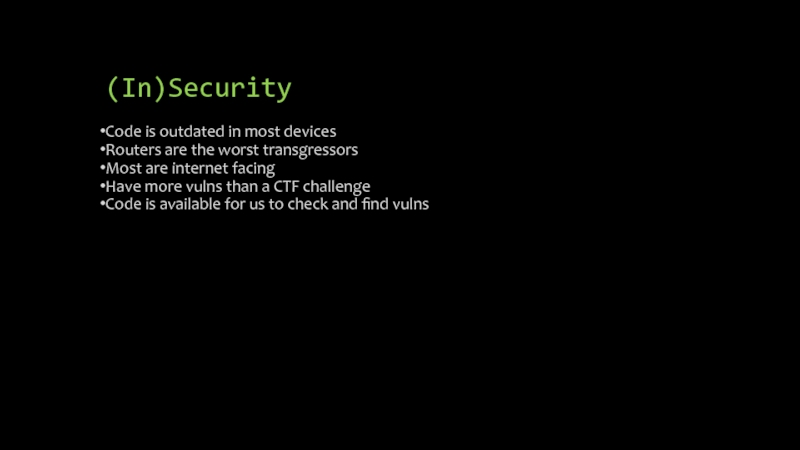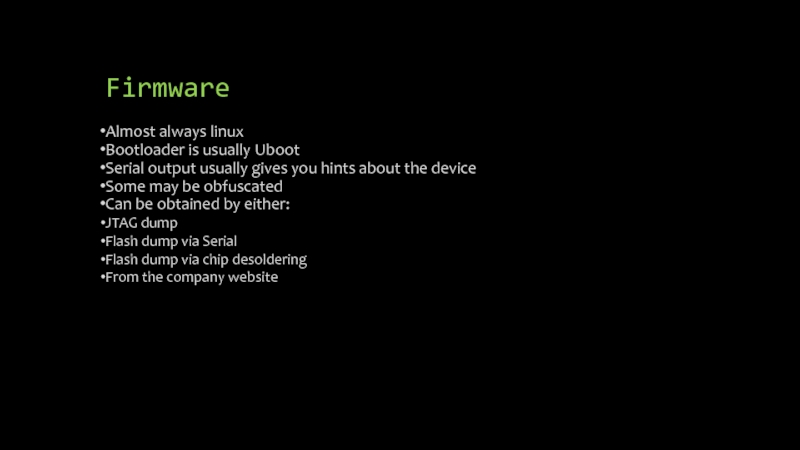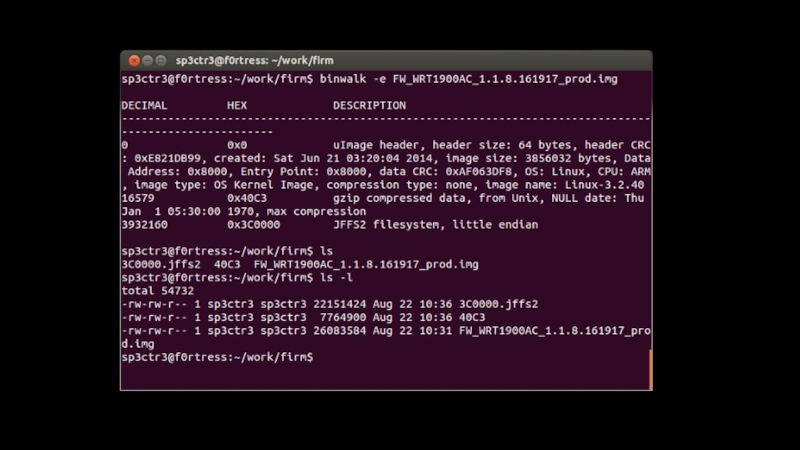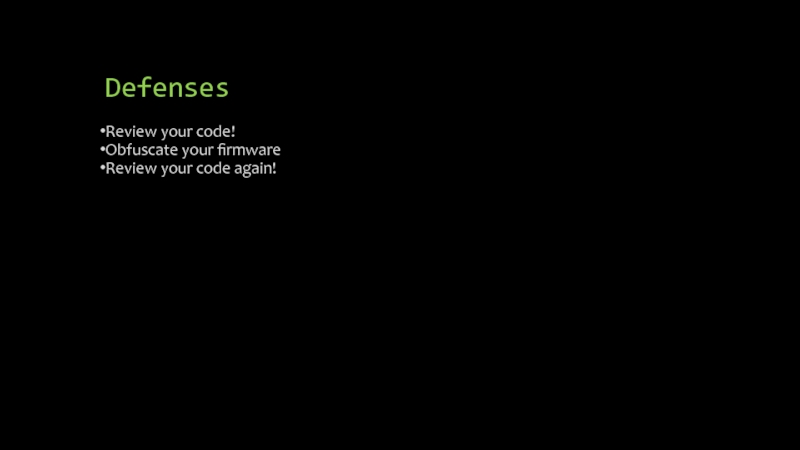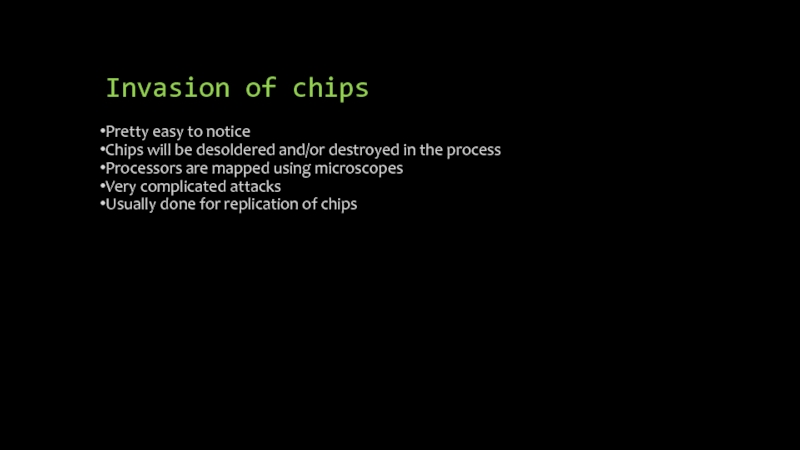- Главная
- Разное
- Дизайн
- Бизнес и предпринимательство
- Аналитика
- Образование
- Развлечения
- Красота и здоровье
- Финансы
- Государство
- Путешествия
- Спорт
- Недвижимость
- Армия
- Графика
- Культурология
- Еда и кулинария
- Лингвистика
- Английский язык
- Астрономия
- Алгебра
- Биология
- География
- Детские презентации
- Информатика
- История
- Литература
- Маркетинг
- Математика
- Медицина
- Менеджмент
- Музыка
- МХК
- Немецкий язык
- ОБЖ
- Обществознание
- Окружающий мир
- Педагогика
- Русский язык
- Технология
- Физика
- Философия
- Химия
- Шаблоны, картинки для презентаций
- Экология
- Экономика
- Юриспруденция
Making and breaking security in embedded devices презентация
Содержание
- 1. Making and breaking security in embedded devices
- 2. #whoami Security enthusiast SDR Engineer @ Bastille
- 3. Why embedded? Large numbers Critical infrastructure dependent
- 4. But…..why?! REPRODUCTION: Understand how the product works
- 5. But…..why?! ACCESS TO OTHERWISE SECURE NETWORKS No
- 6. TOOLS OF THE TRADE Choose your weapons!
- 8. A word about equipment Good equipment =
- 9. LOGIC ANALYZERS Monitor communication Decode protocols Replay
- 11. RF Analysis tools For scanning the RF
- 12. Oscilloscope Digital/Analog Useful for noting timing Can
- 13. Debug Ports
- 14. Debug ports FTW Ports setup to allow
- 15. Debug ports identification Identify the ports Connect
- 16. Identifying Serial ports Serial has 4 lines:
- 17. JTAG ports Joint Test Action Group Used
- 18. Defending against debug port attacks Disable unneeded
- 19. Electronic bus attacks
- 20. SPI,UART and I2C SPI, UART and I2c
- 21. Radio communication
- 22. Sniffing radio signals Use to be hard
- 23. Tools used For most radio communication attacks
- 24. RF attacks Jamming Basically DoS at RF
- 25. Defenses against RF attacks FHSS is effective
- 26. Flash memory forensics
- 27. Flash memory Nonvolatile Used to store data
- 28. Extracting data from flash memory In circuit:
- 29. Defenses against Flash memory forensics OTP memory
- 30. Firmware/Code Analysis
- 31. (In)Security Code is outdated in most devices
- 32. Firmware Almost always linux Bootloader is usually
- 33. Analysing firmware Usually various sections wrapped into
- 35. Defenses Review your code! Obfuscate your firmware Review your code again!
- 36. Invasive attacks
- 37. Invasion of chips Pretty easy to notice
- 38. Resources Stuff that helped me and may help you
- 39. Blogs http://www.devttys0.com/ http://www.bunniestudios.com/ http://travisgoodspeed.blogspot.com http://www.grandideastudio.com/
- 40. Thanks! Questions?
Слайд 1Making and breaking security in embedded devices
Yashin Mehaboobe
SDR Engineer, Bastille Networks
Слайд 2#whoami
Security enthusiast
SDR Engineer @ Bastille Networks
Hardware tinkerer
Speaker: C0C0n 2013, Nullcon V,
HITB Amsterdam and Kaspersky Cyberconference
Organiser, Defcon Kerala
Organiser, Defcon Kerala
twitter.com/YashinMehaboobe
github.com/sp3ctr3
http://www.linkedin.com/pub/yashin-mehaboobe/38/a2/367
Слайд 3Why embedded?
Large numbers
Critical infrastructure dependent on embedded devices
Network devices (both enterprise
and SOHO)
Even if it’s not critical:
Botnet fodder
Pivoting
Storage for the bad guys
On the internet and unsecured (Mostly)
Even if it’s not critical:
Botnet fodder
Pivoting
Storage for the bad guys
On the internet and unsecured (Mostly)
Слайд 4But…..why?!
REPRODUCTION:
Understand how the product works by reverse engineering it
Build a similar
product
$$$$$Profit$$$$$$$$
FREE STUFF!:
Bypass restrictions
Get premium services
UNLOCKING FEATURES:
Ex:Install dd-wrt
Don’t have to pay extra
$$$$$Profit$$$$$$$$
FREE STUFF!:
Bypass restrictions
Get premium services
UNLOCKING FEATURES:
Ex:Install dd-wrt
Don’t have to pay extra
Слайд 5But…..why?!
ACCESS TO OTHERWISE SECURE NETWORKS
No one expects the embedded inquisition!
SOHO/Enterprise routers
are not audited most times
No one checks the firmware
No one checks the firmware
Слайд 8A word about equipment
Good equipment = $$$$
Use open source equipment such
as the bus pirate, hackRF, OpenBench etc…
Commercial tools work better in most of the cases
Would be a good investment
Have at least one each of the separate categories of tools
Logic Analyzer
RF Spectrum Analyzer
Oscilloscope
JTAG debugger
Etc……
Commercial tools work better in most of the cases
Would be a good investment
Have at least one each of the separate categories of tools
Logic Analyzer
RF Spectrum Analyzer
Oscilloscope
JTAG debugger
Etc……
Слайд 9LOGIC ANALYZERS
Monitor communication
Decode protocols
Replay (in some cases)
Cheap (44$ to 500$++)
Open source
ones:
Open Bench
Bus Pirate
Open Bench
Bus Pirate
Слайд 11RF Analysis tools
For scanning the RF frequencies
Recognizing signals
Storing and replay
SDRs are
your friends!
Example:
RFExplorer
RTL-SDR
HackRF/BladeRF/USRP
Example:
RFExplorer
RTL-SDR
HackRF/BladeRF/USRP
Слайд 12Oscilloscope
Digital/Analog
Useful for noting timing
Can also help in recognition of communication protocol
Very
much needed
Слайд 14Debug ports FTW
Ports setup to allow developer/engineer access during testing/repairing
Loved by
hackers because of the access it provides
Different types:
JTAG
Serial
LPC (Xbox/TPM)
Allow access to boot messages
Allows you to log in without authentication
Sometimes you can even access bash
Different types:
JTAG
Serial
LPC (Xbox/TPM)
Allow access to boot messages
Allows you to log in without authentication
Sometimes you can even access bash
Слайд 15Debug ports identification
Identify the ports
Connect the debugger/communication device
Profit!
First step is the
most complex
Methodology varies from protocol to protocol
Number of points is a good indication
Methodology varies from protocol to protocol
Number of points is a good indication
Слайд 16Identifying Serial ports
Serial has 4 lines:
Vcc
Ground
Rx
Tx
Identify ground pin with a multimeter
continuity test
Find vcc by powering up and checking vcc + ground with multimeter
Tx will be the pin with high activity
Rx will be the other
Identify baudrate by trial and error
JTAGulator has support for serial
Find vcc by powering up and checking vcc + ground with multimeter
Tx will be the pin with high activity
Rx will be the other
Identify baudrate by trial and error
JTAGulator has support for serial
Слайд 17JTAG ports
Joint Test Action Group
Used for debugging, updating firmware etc…
Running homebrew
on Xbox
Dumping firmware
Use JTAGulator for finding JTAG ports
OpenOCD has support for a large number of JTAG debuggers
Dumping firmware
Use JTAGulator for finding JTAG ports
OpenOCD has support for a large number of JTAG debuggers
Слайд 18Defending against debug port attacks
Disable unneeded ports
Use authentication for the debug
ports
Shell access should not be given without authentication
Unfortunately these defenses may not be practical in some cases
Shell access should not be given without authentication
Unfortunately these defenses may not be practical in some cases
Слайд 20SPI,UART and I2C
SPI, UART and I2c are some of the more
commonly used protocols in embedded devices
There is no authentication or authorization
It is trivial to sniff traffic
Very easy to replay attacks
Bus pirate would be a good tool
Hardware hackers swiss army knife
Developed by Dangerous Prototypes
There is no authentication or authorization
It is trivial to sniff traffic
Very easy to replay attacks
Bus pirate would be a good tool
Hardware hackers swiss army knife
Developed by Dangerous Prototypes
Слайд 22Sniffing radio signals
Use to be hard and expensive
With the arrival of
SDRs the situation changed
Now you can RX and TX with hardware ranging from 20$ RTL SDR to 1000$ devices
Most signals aren’t encrypted
Some rely on FHSS (Not a good idea)
Now you can RX and TX with hardware ranging from 20$ RTL SDR to 1000$ devices
Most signals aren’t encrypted
Some rely on FHSS (Not a good idea)
Слайд 23Tools used
For most radio communication attacks an SDR would suffice
Mainly because
they can TX and RX in a wide range of frequencies
Some examples are
USRP B210
HackRF
BladeRF
RTLSDR
You can also use RFCat (cc1111 based attack toolkit)
Ubertooth One can be used for Bluetooth sniffing
OR sniff the buses of the transmitter
Some examples are
USRP B210
HackRF
BladeRF
RTLSDR
You can also use RFCat (cc1111 based attack toolkit)
Ubertooth One can be used for Bluetooth sniffing
OR sniff the buses of the transmitter
Слайд 24RF attacks
Jamming
Basically DoS at RF level
Decreases SNR
Techniques differ
Some even disrupt handshakes
Replay
Capture
signal
Store it
Replay at some other time
Store it
Replay at some other time
Слайд 25Defenses against RF attacks
FHSS is effective against jamming
Use of encryption will
defeat most sniffing attacks
Encryption is built into most transmitters
Unfortunately it is not used as much as it should be
Rolling code system is a good defense against replay attack
Encryption is built into most transmitters
Unfortunately it is not used as much as it should be
Rolling code system is a good defense against replay attack
Слайд 27Flash memory
Nonvolatile
Used to store data
Firmware is usually stored in flash memory
Usually
uses SPI for communication
Usually does not have any protection
Usually does not have any protection
Слайд 28Extracting data from flash memory
In circuit:
Don’t remove the chip
Use a chip
programmer or bus pirate to read data
Desoldering
The chip should be removed by desoldering it.
It is then accessed using a chip programmer to get the data
Firmware can be extracted in this manner
Desoldering
The chip should be removed by desoldering it.
It is then accessed using a chip programmer to get the data
Firmware can be extracted in this manner
Слайд 29Defenses against Flash memory forensics
OTP memory protection bits
Doesn’t allow the modification
of flash memory
Only useful against modification attacks
Encryption
Storing the firmware/data encrypted would defeat memory forensics
Also not storing confidential info on the chip
Only useful against modification attacks
Encryption
Storing the firmware/data encrypted would defeat memory forensics
Also not storing confidential info on the chip
Слайд 31(In)Security
Code is outdated in most devices
Routers are the worst transgressors
Most are
internet facing
Have more vulns than a CTF challenge
Code is available for us to check and find vulns
Have more vulns than a CTF challenge
Code is available for us to check and find vulns
Слайд 32Firmware
Almost always linux
Bootloader is usually Uboot
Serial output usually gives you hints
about the device
Some may be obfuscated
Can be obtained by either:
JTAG dump
Flash dump via Serial
Flash dump via chip desoldering
From the company website
Some may be obfuscated
Can be obtained by either:
JTAG dump
Flash dump via Serial
Flash dump via chip desoldering
From the company website
Слайд 33Analysing firmware
Usually various sections wrapped into one bin file
You can use
dd to separate
Best option is to use binwalk
Binwalk is a tool by Craig (of devttys0 blog(great resource for hw reversing))
Automatically analyze and extract firmware files
Best option is to use binwalk
Binwalk is a tool by Craig (of devttys0 blog(great resource for hw reversing))
Automatically analyze and extract firmware files
Слайд 37Invasion of chips
Pretty easy to notice
Chips will be desoldered and/or destroyed
in the process
Processors are mapped using microscopes
Very complicated attacks
Usually done for replication of chips
Processors are mapped using microscopes
Very complicated attacks
Usually done for replication of chips
